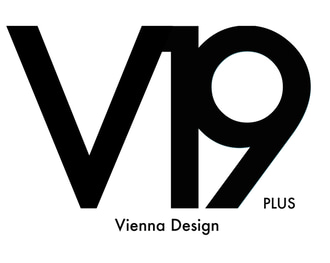

In June, some of Austria's most iconic artists celebrate their birthdays, who profoundly shaped the art world around 1900 with their groundbreaking visions and intense artistic expressions. Two of these personalities – Gustav Klimt (born June 14, 1862) and Egon Schiele (born June 12, 1890) – not only captivated with their masterpieces but also left behind intriguing and sometimes scandalous stories that reflect their passionate and often unconventional lives. Gustav Klimt (born June 14, 1862) was the golden icon of the Viennese art scene, known for his opulent style and his ability to capture the essence of beauty and desire. Once, he clashed with the University of Vienna over his faculty paintings, specifically the series intended for the Great Hall. Hoffmann, among others, wanted more traditional allegorical representations – but Klimt, in his element – insisted on his own symbolic and sensual interpretations. He developed paintings that were so unorthodox, it almost sparked a small cultural revolution. The witz dabei? These paintings, though initially rejected and criticized, became an absolute highlight of his oeuvre, and Klimt, instead of accepting the "serial academic" approach, was celebrated for his unique vision. Perhaps this success went a bit to his head – he is said to have remarked: "Those who want to know something about me as an artist, the only thing that matters, should look carefully at my pictures and try to see what I am and what I want."
Egon Schiele (born June 12, 1890) was the enfant terrible of Austrian art, known for his raw and emotionally charged self-portraits and his unflinching exploration of human sexuality and the human condition. Schiele, not only an exceptional artist but also a true provocateur and rule-breaker, often defied social norms and artistic conventions. His sources weren't just the grand art galleries or famous historical buildings, but – and this is truly scandalous – his own intense emotions and the raw energy of human existence! Once, he was even arrested on charges of immorality and the "distribution of obscene drawings." The witz dabei? This scandal, instead of diminishing his reputation, became an absolute highlight of his notoriety, and Schiele, instead of conforming to bourgeois morality, became the hero of artistic freedom. Perhaps he pushed it a bit too far – he is said to have proclaimed: "I never think of art. I think of life." These anecdotes from the lives of Gustav Klimt and Egon Schiele show that artistic genius often goes hand in hand with a great portion of humor and a shot of unconventionality. Their adventures and eccentric ideas make the history of Viennese art even more exciting!
Tip: To experience the brilliance of Klimt and Schiele in Vienna today:
• Visit the Belvedere to marvel at Klimt's "The Kiss" and other golden masterpieces.
• Explore the Leopold Museum, which houses the world's largest collection of Schiele's powerful works.
• The Albertina also holds significant collections of their drawings and graphic works.
The Kiss, 1907
©gemeinfrei
More exciting anecdotes or news about interesting people and institutions of the last century: https://www.facebook.com/groups/vienna19plus
Famous Birthday Celebrities in June:
Klimt & Schiele
Vienna19plus Blog:

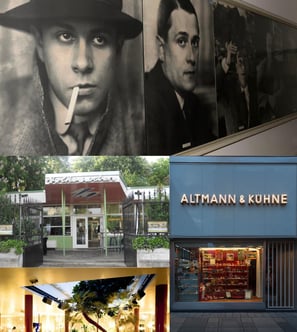
May, traditionally a month of blossoming and joie de vivre, also brings us the birthdays of two remarkable individuals whose work has had a lasting impact on the world.
• Sigmund Freud (May 6, 1856): The founder of psychoanalysis, whose theories on the unconscious, dream interpretation, and the human psyche remain of great importance to this day. Freud, a Viennese physician, revolutionized the understanding of the human mind and left behind a complex and controversial body of work.
• Oswald Haerdtl (May 17, 1899): The Austrian architect and designer is an important part of the Viennese art scene. He was a student and later partner of Josef Hoffmann and shaped the aesthetics of the 20th century with his functional and elegant designs. His work, which ranges from furniture to interior design to industrial design, demonstrates a deep understanding of form and function. These two individuals, as different as they were, changed the world in their own way. Freud through his groundbreaking ideas and Haerdtl through his timeless designs. May reminds us to honor their legacy and be inspired by their work. These two personalities, as different as they were, changed the world in their own way. Freud with his groundbreaking ideas and Haerdtl with his timeless designs. May reminds us to honor their legacy and be inspired by their work.
Tip: For insights into the life and work of Sigmund Freud, we recommend the Sigmund Freud Museum at Berggasse 19, where he once lived and worked. You can also visit Freud in Sigmund Freud Park, where a memorial to him stands. Objects by Oswald Haerdtl can be found primarily at the MAK – Museum of Applied Arts or at the Architekturzentrum Wien in the MuseumsQuartier, where his design work is exhibited. And of course, you can also discover some of his works while strolling through Vienna – such as the Wien Museum Karlsplatz, the Volksgarten Pavilion, Café Prückel, Confiserie Altmann & Kühne, and more.
Oswald Haerdtl and selected works from 1922
©Tob
More exciting anecdotes or news about interesting people and institutions of the last century: https://www.facebook.com/groups/vienna19plus
May: Birthdays of Mind and Design
Vienna19plus Blog:


The Kunst Haus Wien is not a museum like any other – it is a Gesamtkunstwerk (total work of art)! In 1991, Friedensreich Hundertwasser (1928–2000), painter, architect, and eco-visionary, transformed an old furniture factory into a place full of color, shapes, and life. But the path to this goal was not without resistance! Hundertwasser's architecture has always been polarizing – and the Kunst Haus Wien was no exception. Many residents were skeptical about whether this colorful, playful building, with its sloping floors, irregular windows, and wild facades, would even fit into the city. Some criticized it for not fitting into the more traditional cityscape of the 3rd district, while others feared the building could become a tourist attraction rather than a "serious" museum. However, Hundertwasser remained true and steadfast to his design – proving that art and nature belong together. He prevailed, and the Kunst Haus Wien became an ecological showcase project: green roofs, rainwater harvesting, and architecture that adapts to nature rather than subjugating it. Today, it is one of Vienna's most popular art museums—a triumph over skepticism!
Tip: In addition to the permanent exhibition, which features the ultimate Hundertwasser collection of paintings, architecture, and eco-visions, there are currently two other shows. One is Mika Rottenberg: Antimatter Factory (until August 10, 2025) – whimsical, surreal art about the insanity of the global economy and digital materiality. The other is Plastic Matters (until May 25, 2025) – a critical, creative exploration of plastic in art – provocative and visionary.
Kunst Haus Wien
© Eva Kelety
More exciting anecdotes or news about interesting people and institutions of the last century: https://www.facebook.com/groups/vienna19plus
Kunst Haus Wien – where art lives wild, colorful, and untamed!
Vienna19plus Blog:


With the approaching Easter festivities, not only does the celebration of the resurrection take center stage, but also the tradition of intricately decorated Easter eggs. While many think of painted chicken eggs, there is hardly a more magnificent symbol of this tradition than the legendary Fabergé eggs, once created for the Russian imperial family. However, behind their dazzling beauty lies a story full of upheavals that connects Vienna, the fall of the Tsarist Empire, and spectacular rediscoveries.
The renowned jeweler Peter Carl Fabergé (1846–1920) began crafting luxurious Easter eggs from gold, enamel, and precious stones in the late 19th century—as annual Easter gifts for the Russian imperial family. However, with the 1917 revolution, the history of these masterpieces took a dramatic turn: the Bolsheviks confiscated many of the Fabergé eggs, sold some abroad, while others disappeared without a trace.
This is where Vienna comes into play. In the 1920s, the city became an important hub for stolen art treasures. The Viennese art dealer Alexander von Keußler (1877–1944) is said to have played a crucial role in the resale of some Fabergé objects. The renowned jeweler dynasty A.E. Köchert, whose founder Alois Köchert (1806–1876) was once a purveyor to the Habsburg court, may also have traded in the treasures smuggled from Russia. Art lovers such as members of the influential Rothschild family, who had close ties to Vienna, secured some of these exquisite pieces. However, the journeys of the Fabergé eggs did not end there. A particularly curious case occurred decades later in the USA: an old, gold-shining egg turned up at a flea market. The buyer thought it was an ordinary piece of jewelry and paid only a few thousand dollars. Only upon closer examination did it turn out that he held one of the missing Fabergé eggs from the Tsarist era in his hands—now worth millions.
Thus, the history of the Fabergé eggs connects not only the splendor of the Russian Tsarist court with the tragedy of the revolution, but also the magnificent salons of Vienna with the intricate paths of international art trade. And like Easter itself, it is a story of loss, rediscovery, and new life.
Tip: Those who want to see original Fabergé eggs in Vienna have several options. The Kunsthistorisches Museum Vienna, for example, displays some of these magnificent masterpieces, which are part of the Russian art collection. Additionally, the Viennese jeweler A.E. Köchert, who had close ties to the Habsburg court, offers interesting tours through his shop in the first district of Vienna, where you can learn more about the company's history and its connections to Fabergé.
Fabergé's "Azova Egg," 1891, contains a miniature replica of the cruiser Pamyat Azova, crafted from gold and platinum. Tsarevich Nicholas circumnavigated the world on this cruiser in 1890/91. The portholes are set with diamonds, and the ship's name is embossed on the stern. The ship floats on a golden sea of aquamarine and can be removed from its base using a loop. It was a gift from Tsar Alexander III to his wife, Tsarina Maria Feodorovna.
© Kunsthistorisches Museum KHM
More exciting anecdotes or news about interesting people and institutions of the last century: https://www.facebook.com/groups/vienna19plus
Admire Fabergé Easter eggs at the Kunsthistorisches Museum
Vienna19plus Blog:
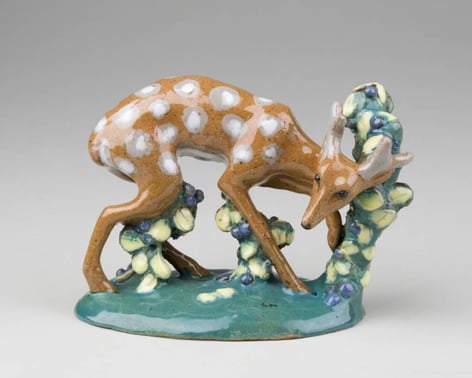

In April, some notable Austrian artists celebrate their birthdays, who greatly influenced the art world around 1900 with their creativity and unique approaches. Three of these personalities – Olga Sitte, Heddi Hirsch and Dagobert Peche – not only impressed with their works but also left behind intriguing and sometimes funny anecdotes that reflect their exceptional characters!
Olga Sitte (born April 1, 1884) was a talented ceramicist of the Wiener Werkstätte, often referred to as the "rebel" among the designers. Once, she got into a heated argument with Josef Hoffmann, one of the leading figures of the Werkstätte, over the design of a vase. Hoffmann wanted something more “serial,” but Olga, in her element, insisted on individuality. She designed a vase that was so unorthodox, it almost sparked a small artistic revolution. The funny part? This vase became a major highlight of the exhibition, and Hoffmann, who had initially been skeptical, had to admit defeat. Instead of celebrating the “serial mass-produced” designs, Olga became the heroine of uniqueness. She may have even been a little too pleased with herself afterward, as she was quoted saying, “Sometimes, you have to break the resistance of traditional taste to truly bring art to life.”
Heddi Hirsch (born April 9, 1895) was not only an exceptional designer but also a true nature enthusiast and source of inspiration. Her sources weren’t just the grand art galleries or famous historical buildings, but – and this is truly amusing – butterfly wings and flowers! Once, she was so excited about a new fabric design that she simply carried the fabric home in her bag. The story of her walking through Vienna with a piece of fabric under her arm, not even noticing, was always one she told with a smile. It was almost as if she wanted to carry nature in her bag – which, in fact, reflects a pretty cool understanding of art. When you think about it, she might have been the first person to “take her fabric for a walk!”
Dagobert Peche (born April 3, 1887) was a designer who strayed far from the usual artistic sources of his time. For him, it wasn’t always about museums; instead – and this sounds almost too crazy to be true – he found inspiration in a Viennese amusement park. Rather than wandering through architecture or paintings, he immersed himself in the cheerful shapes of carousels and the dazzling lights of the park. Peche is said to have spent an entire week in one of these parks just to get the perfect idea for a piece of furniture inspired by the swirling, colorful carousels. “You don’t always have to dive into art history, sometimes a bit of carnival is all you need for the perfect design moment,” he reportedly said. He was the type who preferred “curved lines” over “straight edges” – and that’s exactly what made his works so unique.
These anecdotes from the lives of Olga Sitte, Heddi Hirsch, and Dagobert Peche show that art often comes with a large dose of humor and a splash of unconventionality. Their adventures and eccentric ideas make the history of the Wiener Werkstätte even more exciting!‘
Tip: At the MAK – Austrian Museum of Applied Arts, the exhibition "PECHE POP. Dagobert Peche and his Traces in the Present" explores Peche's influence on modern design and presents both historical and contemporary works inspired by his work. In addition, the MAK online collection includes works by Peche, Hirsch and Sitte.
Helga Sitte, Young Deer, 1913
© MAK, Inv.nr. WI 1281
More exciting anecdotes or news about interesting people and institutions of the last century: https://www.facebook.com/groups/vienna19plus
Famous Birthday Celebrities in April
Vienna19plus Blog:


Anyone who thinks furniture is just functional décor has clearly never been to the Vienna Furniture Museum. Here, chairs, tables, and cabinets tell fascinating stories of imperial everyday life. Some of the most intriguing pieces include the quirky seating arrangements from past centuries – among them, the famous "Emperor’s Chair" with a hidden footrest for young Emperor Franz Joseph. As a child, he reportedly complained that his legs dangled uncomfortably, so a retractable footrest was specially crafted for him. Even emperors had their everyday struggles!
Tip: But the Vienna Furniture Museum offers more than just impressive furnishings. It also hosts exquisite special exhibitions. Currently, the small yet exquisite display "Japanese Porcelain at the Imperial Court in Vienna" showcases magnificent pieces from the Imperial Silver Collection. If you’d like to immerse yourself in the world of Habsburg dining culture, don’t miss this fascinating collection of high-quality Japanese export porcelain from the early 18th century!.
Permanent exhibition
Japanese Porcelain until
August 31, 2025
Vienna Furniture Museum, Biedermeier bunk © Schloss Schoenbrunn Kultur- und Betriebsges.m.b.H./Severin Wurnig
More exciting anecdotes or news about interesting people and institutions of the last century: https://www.facebook.com/groups/vienna19plus
Visit to Vienna Furniture Museum
Vienna19plus Blog:
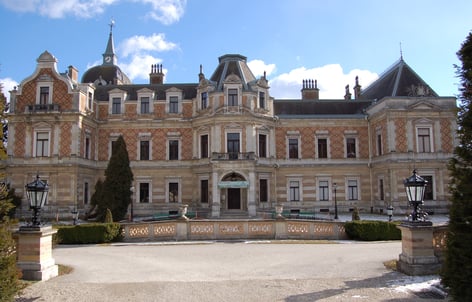

The Hermesvilla in Vienna, built between 1881 and 1886, also known as Sisi's "Castle of Dreams", is an architectural jewel in the Lainzer Tiergarten in Vienna. This impressive building, which Emperor Franz Joseph gave to his Sisi to surprise her and perhaps to keep her in Vienna for a while, exudes a very special charm. The history of the Hermesvilla is closely linked to the life of Empress Elisabeth, who found this a place of peace and relaxation The construction of the villa was led by the renowned architect Carl von Hasenauer, who was also responsible for many other important buildings in Vienna. The architecture of the Hermesvilla is in the neo-baroque style and is characterized by its magnificent facades, elegant details and spacious gardens. A visit to the Hermesvilla gives you an insight into the life of the imperial family. You can visit the magnificent rooms where Sisi and Franz Joseph resided, including the Empress's bedroom with the famous "Star Room" where the ceiling is covered in stars. The empress's salon, the dining room and the emperor's study are also part of the tour. The Hermesvilla is also located in the middle of a beautiful garden that invites you to stroll and linger. The extensive green spaces, colorful flowerbeds and shady trees offer a welcome break from the hustle and bustle of the city. Especially in spring, when nature awakens, a visit to the garden is an unforgettable experience.
Tip: After the well-deserved winter break, the Hermesvilla will open its doors to visitors again on March 15, 2024.
Until October 31, 2025
South side of the Hermesvilla in Hietzing
© C. Stadler/Bwag
More exciting anecdotes or news about interesting people and institutions of the last century: https://www.facebook.com/groups/vienna19plus
Visit to the Hermesvilla
Vienna19plus Blog:
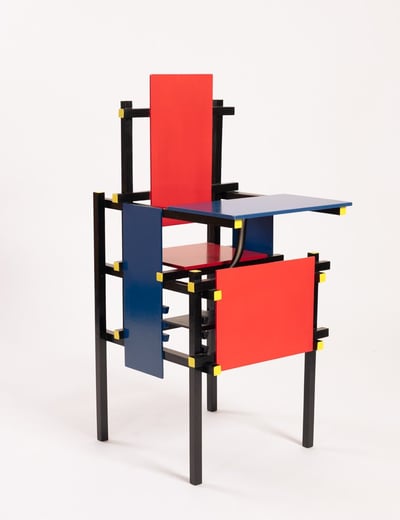

The MAK in Vienna houses a broad range of over 3,000 contemporary furniture pieces and objects, offering its visitors a fascinating glimpse into design history from the 20th century onwards. This collection, which is continuously expanded, reflects the evolution of materials, forms, and functions of diverse designs up to the present day. Parts of the collection include significant works by influential designers such as Charles and Ray Eames, whose innovative furniture designs shaped post-war modernism, as well as Le Corbusier, whose "Grand Confort" armchair is considered the epitome of modern comfort. The Austrian designer Oswald Haerdtl is also represented with some of his most well-known designs, including the elegant "Haerdtl Armchair." Further highlights include the works of Dutch designer Gerrit Rietveld (1888–1964), particularly the red-blue-yellow chair for adults and the matching high chair for children, with which a curious story is also associated. Namely, it was originally designed for Rietveld's own children and was constructed in such a way that it could "grow" with the child through a simple conversion and be adjusted to the child's size.
Permanent exhibition
Red, yellow and blue high chair for children by Gerrit Rietfelt, 1918 © Tob
More exciting anecdotes or news about interesting people and institutions of the last century: https://www.facebook.com/groups/vienna19plus
Vienna19plus Blog:
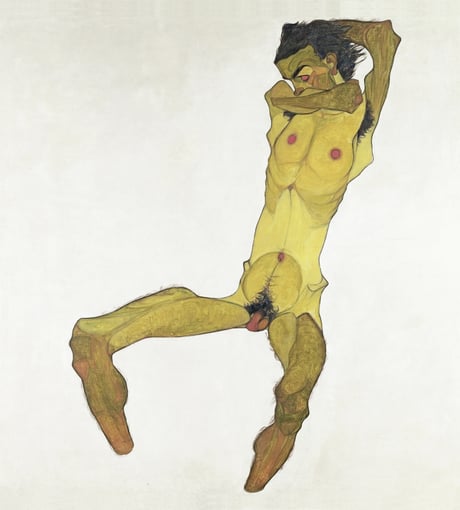

Egon Schiele was not only a brilliant artist, but also a master of creative survival. When he was arrested in 1912 for “distributing indecent drawings,” the police searched his studio and confiscated over a hundred of his works. The judge, apparently not a great art lover, burned one of his nude drawings in the courtroom in front of the assembled audience - a moment that later inspired Schiele to paint even more provocatively. If you would like to see his art for yourself, you can admire a collection of his masterpieces in the permanent exhibition of the Leopold Museum. With 44 paintings, over 200 watercolors, drawings and prints as well as numerous autographs and varia, it houses the largest and most important Schiele collection in the world.
Permanent exhibition
Egon Schiele, “Sitting Male Nude” (self-portrait), 1910 © Leopold Museum, Vienna/ Manfred Thumberger
More exciting anecdotes or news about interesting people and institutions of the last century: https://www.facebook.com/groups/vienna19plus
Egon Schiele in the Leopold Museum
Vienna19plus Blog:
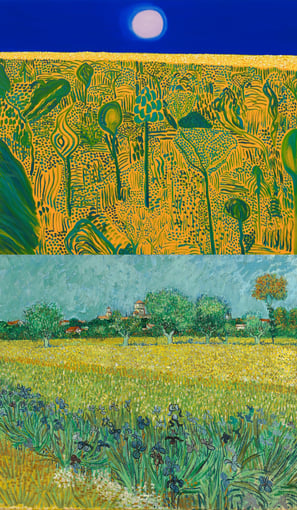

The Albertina presents an exhibition that compares works by the Chinese Canadian artist Matthew Wong (1984-2019) and the Dutch artist Vincent van Gogh (1853-1890). The artists share a remarkable artistic and personal connection, which is reflected in their expressive coloring, their unconventional painting style, their late calling to painting, their struggle with psychological problems and their tragic end to their lives.
Although both of them had no direct connection to Vienna, there are still interesting aspects to be told about them.
For example, it is said that Van Gogh was a great lover of nature and spent a lot of time outdoors painting. He was fascinated by the beauty of nature and tried to capture its colors and shapes in his paintings. Once, he is said to have spent an entire day painting a field of sunflowers, and at the end of the day he was so exhausted that he fell asleep and left his tools lying next to him in the grass. The artist also never had a joyful relationship. He fell unhappily in love with his cousin Kee Vos and later with a prostitute named Sien Hoornik. Both loves failed and left Van Gogh with deep disappointments. After she rejected his marriage proposal, Van Gogh sent her one of his shoes as a sign of his despair. It is believed that he saw the shoe as a symbol of his willingness to follow her wherever she might go. Matthew Wong, the self-taught artist, began painting at the age of 27. Previously, he had worked in various professions, including as an English teacher in China and as a bookseller in Hong Kong. It is said that one day in a bookstore he stumbled upon an art book and was inspired to pick up a brush himself. Wong was self-taught and taught himself to paint. Wong also suffered from depression, Tourette's syndrome and autism. He spoke openly about his mental health problems and also processed them in his works. Painting was a kind of therapy for him and helped him to express his inner conflicts.
Until June 19, 2025
Matthew Wong, Coming of Age Landscape, 2018
© National Gallery of Slovenia
Vincent van Gogh,
Field with irises near Arles, 1888
© Vincent van Gogh Foundation
More exciting anecdotes or news about interesting people and institutions of the last century: https://www.facebook.com/groups/vienna19plus
Van Gogh und Matthew Wong at the Albertina
Vienna19plus Blog:
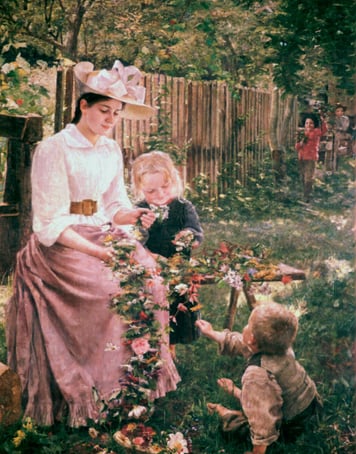

Slovenian Painting at the Lower Belvedere
The current exhibition “The World in Colors – Slovenian Painting 1848−1918“at the Belvedere also addresses the ambivalent relationship of Slovenian artists to Vienna. This tension between attraction and delimitation, between the desire for recognition in the art metropolis and the adherence to one's own identity, is reflected not only in the works themselves, but also in many an anecdote that tells of the life of Slovenian artists in Vienna at the turn of the century. One of the artists presented is Ivan Grohar (1867-1911), one of the most important Slovenian painters around 1900, who had a special relationship with Vienna. Like many other artists of his time, he was drawn to the Danube metropolis, which was considered the center of art and culture. But Grohar's stay in Vienna was marked by ambivalence. One story tells that Grohar often wandered for hours through the streets of Vienna, looking for motifs for his paintings. He came across an old man sitting on a bench playing the violin. Grohar was so impressed by the melancholy and expression of the violinist that he spontaneously asked him to sit for him. The result was the painting "The Violinist", which is now considered one of his masterpieces. This story shows how Grohar in Vienna not only sought inspiration, but also human encounters. He was a keen observer of his environment and captured the small stories of everyday life in his paintings. He was interested not only in the beautiful sides of life, but also in the dark sides, the loneliness and poverty.
Until 25 May 2025
Ivana Kobilca, „Summer“, 1889–1890
© National Gallery of Slovenia


Dagobert Peche at MAK
Currently, the Museum of Applied Arts (MAK) in Vienna is hosting the exhibition "Peche Pop. Dagobert Peche and his Traces in the Present". Dagobert Peche, an eccentric and influential Austrian designer, was known for his playful and extravagant designs, which often contrasted with the stricter style of the Wiener Werkstätte. He was an important member of this group, which revolutionized the arts and crafts in Vienna around the turn of the century. Peche's life was full of surprises and unexpected turns; he is said to have once declared, "I want my furniture to dance!" His designs were so extravagant that they sometimes even surprised the workshop's craftsmen. At the Kunstgewerbeschule his lectures were famous for their bizarre anecdotes and surprising twists. He allegedly said once poked a student in the behind with a sharpened pencil to get his attention. His works can still be seen today in many museums and collections around the world and continue to inspire people with their unique and imaginative aesthetic.
Until 11 May 2025
Dagobert Peche, Wiener Werkstätte, "Daphne" Wallpaper, 1914, © MAK
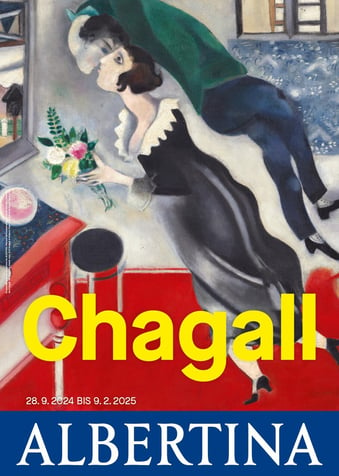

Marc Chagall at Albertina Museum
The world famous painter Marc Chagall was a master of the imagination, and his world obeyed its own rules - much to the astonishment of his contemporaries. Pablo Picasso also recognized Chagall’s talent, but there was a charming rivalry between the two artists. Picasso praised Chagall as a talent of color, to which he remarked with a wink: “I admire him very much… if only I could like him a little more!” In addition to art, Chagall had a fondness for goats - both in his paintings and in real life. During his time in Russia, he kept a goat in his house, much to the dismay of his neighbors. “At least she’s a quiet listener – unlike the art critics!” he joked. His humor was also evident in his interactions with art collectors: When a proud owner presented him with his supposed Chagall painting, the artist looked at it briefly and said dryly: “Very interesting. Did you know that I sometimes paint fakes too?” A critic once complained about his famous flying cows, sneering that such animals did not exist in reality. Chagall replied calmly: “In my world, yes!”
Until 9 February 2025
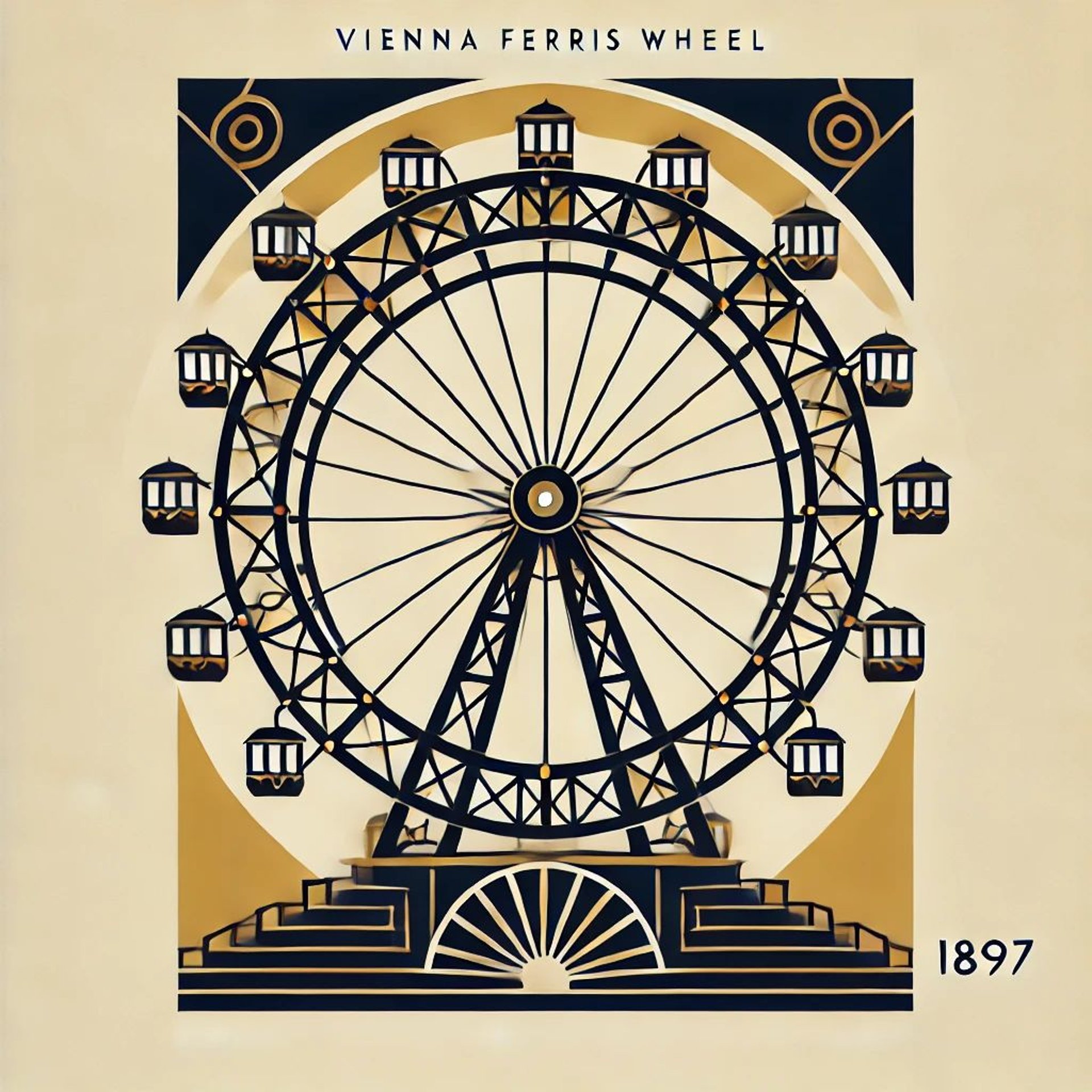
Privacy policy
© Der Inhalt dieser Seite ist urheberrechtlich geschützt
und Eigentum von V19plus.
Imprint
Contact
Alexandra Abaza
Pfarrwiesengasse 18
A-1190 Wien
